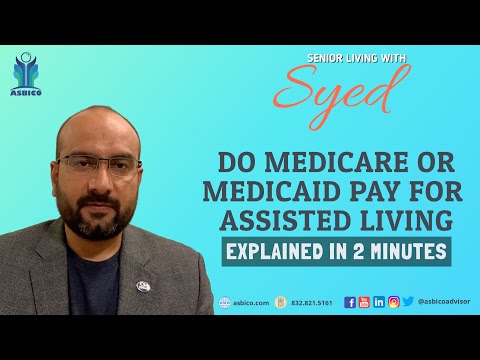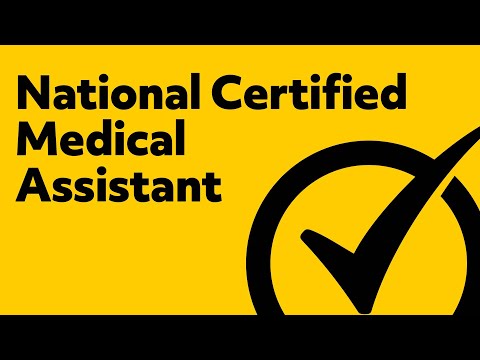Paying for Assisted Living with Medicaid
Contents [show]
If you or a loved one are considering paying for assisted living with Medicaid, there are a few things you should know. Medicaid can help cover the cost of assisted living, but there are some eligibility requirements and restrictions that you’ll need to be aware of. In this blog post, we’ll outline everything you need to know about paying for assisted living with Medicaid.
Checkout this video:
Assisted living vs. nursing homes what’s the difference?
The terms “assisted living” and “nursing home” are often used interchangeably, but there are actually some key differences between the two types of care. Assisted living facilities are designed for seniors who need some help with activities of daily living (ADLs), such as bathing, dressing, and eating, but don’t require the around-the-clock medical care that nursing homes provide. Nursing homes, on the other hand, are for seniors who need constant medical supervision and care.
There are also some differences in cost between assisted living and nursing home care Assisted living is typically less expensive than nursing home care since the level of care is not as high. Nursing home care can be very expensive, especially if your loved one needs a private room or special services.
If you’re considering assisted living for a loved one, it’s important to research your options and compare costs before making a decision. Medicaid can help pay for both assisted living and nursing home care, but coverage varies from state to state. To learn more about Medicaid coverage for assisted living and nursing home care in your state, contact your local Medicaid office.
How does Medicaid help pay for assisted living?
There are many ways to finance assisted living, but for those who qualify, Medicaid can be a great option. Medicaid is a government-funded health insurance program that is available to low-income individuals and families. While Medicaid does not typically pay for assisted living directly, it can help cover the cost of care in some situations.
To qualify for Medicaid assistance with assisted living costs, you must first meet the program’s income and asset requirements. If you are ineligible for traditional Medicaid, you may still be able to receive coverage through a Medicaid waiver program. Once you are enrolled in Medicaid, you will work with your state’s Medicaid office to choose an assisted living facility that meets your needs and budget.
Medicaid can be a great way to finance assisted living, but it is important to understand the eligibility requirements and coverage options before applying. For more information on paying for assisted living with Medicaid, please contact your state’s Medicaid office or an experienced elder law attorney in your area.
What are the income and asset limits for Medicaid eligibility?
In order to be eligible for Medicaid coverage of assisted living, an individual must meet certain income and asset limits.
Income limits vary from state to state, but are typically around $2,000 – $3,000 per month. Asset limits are typically around $2,000 – $4,000 for an individual, or $3,000 – $6,000 for a married couple.
There are some exceptions to the income and asset limits for Medicaid eligibility. For example, in some states, certain income-producing assets (such as a home or a farm) are not counted towards the asset limit. Additionally, in some states, individuals may be able to use a ” Medicaid spend-down” to become eligible for coverage. Under a Medicaid spend-down, an individual can reduce their countable assets by using them to pay for medical expenses. Once their countable assets are below the Medicaid asset limit, they will be eligible for coverage.
How do you apply for Medicaid assistance?
Paying for assisted living with Medicaid usually involves first qualifying for Medicaid coverage, which can be a complicated process. Medicaid is a need-based program, so applicants must demonstrate both financial and medical need in order to be approved for coverage.
There are many ways to qualify for Medicaid assistance, but the most common way is through a process called “asset verification.” Asset verification involves providing documentation of all of your financial assets, including bank accounts, investments, and property ownership. The government will then determine whether you have enough assets to cover the cost of your care without assistance.
If you are found to have too many assets to qualify for Medicaid coverage, you may still be able to receive assistance through a process called “spousal refusal.” Spousal refusal allows you to transfer ownership of your assets to your spouse, which can help you become eligible for Medicaid coverage.
Once you have been approved for Medicaid coverage, you will need to choose an assisted living facility that accepts Medicaid payments. Not all assisted living facilities accept Medicaid, so it is important to do your research before making a decision.
If you have any questions about paying for assisted living with Medicaid, please contact your local Department of Social Services office.
What services does Medicaid cover in assisted living?
There are a number of services that Medicaid will cover in assisted living. These include personal care services, nursing care, and home health services. Medicaid will also cover the cost of room and board, as well as any medical expenses that are incurred while in assisted living.
How much does Medicaid pay for assisted living?
In order to be eligible for Medicaid assistance with paying for assisted living, an individual must first meet certain income and resource requirements. Medicaid will then cover a portion of the costs associated with assisted living, up to a certain amount. The specific amount that Medicaid will pay for assisted living will vary from state to state.
Are there any other financial assistance programs for assisted living?
There are a number of financial assistance programs for assisted living, including Medicaid. Medicaid is a government-funded program that provides health insurance for low-income individuals and families. Medicaid can help cover the cost of assisted living for those who qualify. There are also a number of private financial assistance programs that can help cover the cost of assisted living. These programs are typically need-based and may have income restrictions.
What are the pros and cons of using Medicaid to pay for assisted living?
There are a few pros and cons to using Medicaid to pay for assisted living.
One pro is that it can help cover the costs of assisted living. This can be a big help, especially if the cost of assisted living is a financial burden.
Another pro is that it can help people stay in their own homes longer. This is because Medicaid can help pay for in-home care services which can allow people to live independently for longer.
A con of using Medicaid to pay for assisted living is that there may be some limitations on what services are covered. For example, Medicaid may only cover certain types of care or may not cover the full cost of care.
Another potential con is that Medicaid eligibility criteria can be strict, and people may not be able to qualify for coverage.
What are some tips for choosing an assisted living facility?
There are a few things to keep in mind when choosing an assisted living facility:
-Location: You’ll want to choose a facility that is convenient for you and your loved ones. Consider factors such as proximity to family, friends, and medical facilities.
-Budget: Make sure to consider the cost of living in the facility and whether it is covered by Medicaid.
-Services: Look for a facility that offers the services your loved one needs, such as assistance with activities of daily living, medication management, and transportation.
-Amenities: Choose a facility that has the amenities your loved one desires, such as a private room, laundry and housekeeping services, and recreational activities.
How do you know if an assisted living facility is right for you?
It’s important to do your research when you are considering an assisted living facility. There are a lot of factors to consider, such as cost, location, services offered, and whether or not the facility is Medicaid certified.
Medicaid is a joint federal and state program that helps pay for medical care for low-income Americans. If you are over the age of 65 or have a disability, you may be eligible for Medicaid assistance to help pay for long-term care at an assisted living facility.
To be eligible for Medicaid assistance, an assisted living facility must be certified by the state in which it is located. Certification requirements vary from state to state, but all states have specific standards that must be met in order for an assisted living facility to be eligible for Medicaid funding.
When you are considering an assisted living facility, it’s important to ask if they are Medicaid certified. If they are not, you may still be able to receive financial assistance through other programs, such as Medicare or private insurance.
It’s also important to consider the cost of an assisted living facility before you make a decision. Costs can vary widely depending on the location, services offered, and other factors. In general, assisted living facilities that accept Medicaid tend to be more affordable than those that do not.
If you think an assisted living facility might be right for you or your loved one, it’s important to do your research and ask lots of questions. With careful planning and consideration, you can find an affordable and suitable assisted living option.







